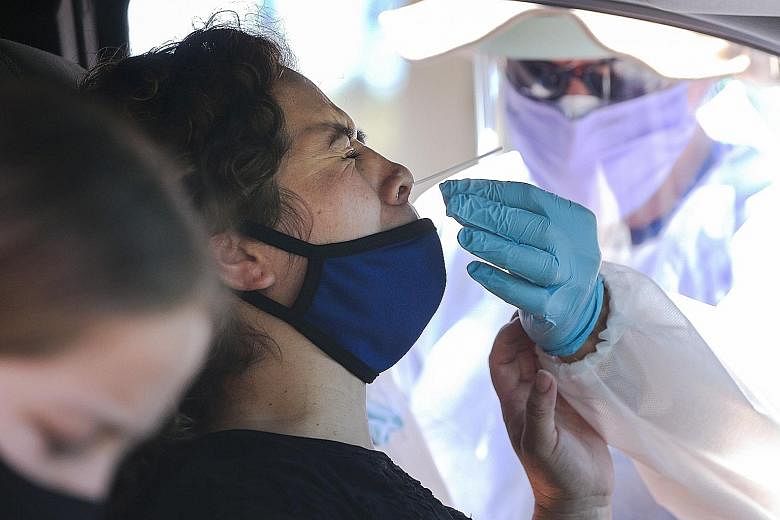ATLANTA • The United States Centres for Disease Control and Prevention (CDC) quietly modified its coronavirus testing guidelines this week to exclude people who do not have symptoms of Covid-19 - even if they have recently been exposed to the virus.
Experts questioned the revision, pointing to the importance of identifying infections in the small window immediately before the onset of symptoms, when many individuals appear to be most contagious.
Models suggest that about half of transmission events can be traced back to individuals still in this pre-symptomatic stage, before they start to feel ill - if they ever feel sick at all.
"This is potentially dangerous," said Dr Krutika Kuppalli, an infectious disease physician in Palo Alto, California.
Restricting testing to only people with obvious symptoms of Covid-19 means "you're not looking for a lot of people who are potential spreaders of disease", she added.
"I feel like this is going to make things worse."
At a moment when experts have almost universally come forward to encourage more frequent and widespread testing, especially to reach vulnerable and marginalised sectors of the population, the CDC's update appears counter-intuitive and "very strange", said Dr Susan Butler-Wu, a clinical microbiologist at the Keck School of Medicine of the University of California.
Just weeks ago, the National Institutes of Health announced the first round of grant recipients for its Rapid Acceleration of Diagnostics programme, or RADx, to scale up coronavirus testing in the coming weeks and months.
On the agency's RADx website, officials underscore the importance of prioritising tests that can "detect people who are asymptomatic".
A more lax approach to testing, experts said, could delay crucial treatments, as well as obscure, or even hasten, the coronavirus' spread in the community.
Prior iterations of the CDC's testing guidelines struck a markedly different tone, explicitly stating that "testing is recommended for all close contacts" of people infected with the coronavirus, regardless of symptoms.
The agency also specifically emphasised "the potential for asymptomatic and pre-symptomatic transmission" as an important factor in the spread of the virus.
The newest version, which was posted on Monday, amended the agency's guidance to say that people who have been in close contact with an infected individual - typically defined as being within 2m of a person with the coronavirus and for at least 15 minutes - "do not necessarily need a test" if they do not have symptoms.
Exceptions, the agency noted, might be made for "vulnerable" individuals, or if health care providers or state or local public health officials recommend testing.
Dr Butler-Wu said she was concerned that the guidelines would be misinterpreted as implying that people without symptoms were unable to pass the coronavirus on to others - a falsehood that experts had been trying for months to dispel.
The reasons behind the surprise shift in testing recommendations are unclear. In response to an inquiry from The New York Times, a representative for the CDC directed the questions to the US Department of Health and Human Services (HHS).
An HHS spokesman said that asymptomatic testing could still be warranted "when directed by public health leaders or health care providers", and noted that testing decisions should be "based on individual circumstances and the status of community spread".
"We revised the guidance to reflect current evidence and the best public health interventions," the spokesman said.
NYTIMES











